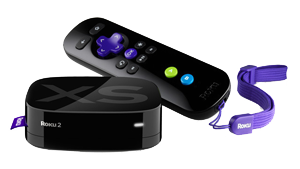Roksbox and Dropbox
Would you like to be able to drop photos into a folder on your local computer, and have them appear on your friends' or relatives' Roksbox? Here's how to do it.
Dropbox (http://www.dropbox.com) allows you to securely share local files with other people. Whenever a file is added, deleted, or changed at one location, it is automatically changed at all other locations where it is being shared. Roksbox can then access these files, and display them on the Roku player.
First we need to set up Dropbox. Here are step-by-step instructions on setting up Dropbox:
- Go to http://www.dropbox.com and create a new account, or log into your existing account if you already have one.
- Create a folder to be used as a shared folder. For the purpose of this tutorial, we will call this folder Family, but you can call it whatever you want. You can share it now, or share it later.
- Depending on how you want to use this folder, you should create some subfolders below the main shared folder. If you want to use this folder for all types of media, you can create a Videos folder, a Music folder, and a Photos folder.
- If you haven't already done so, download and install the Dropbox software on your computer. This will create a duplicate folder structure of your Dropbox web folders on your computer, and will synchronize your files in your Dropbox folders between your local computer, and your Dropbox web folders.
- Whoever you are sharing your files with will also need to have a Dropbox account, and will need to have the synchronization software on their computer.
- Share your shared folder with the people you want to have access to it. They will need to sign into their dropbox.com account and accept the shared folder. The shared folder should then appear within the Dropbox folder structure on everyone's computer who has shared access to it. Whenever a file is added, deleted, or changed at one location, it will synchronize with everyone's computer automatically.
Now we need to make the shared folder accessible to Roksbox. There are several ways to do this. If you used the default options when you installed the Dropbox synchronization software, your Dropbox files are in your Documents folder. You need to be able to access these files from your web server. To do this, you can either move the Dropbox folder structure to under your web server root folder, or you can create an alias that points to the files. To move the files, change the folder location in the Dropbox preferences so that they are directly under your web server root folder, or to create an alias, add an alias definition in your web server config file.
Now start Roksbox. You probably don't want to change the network configuration of any of the existing user accounts, so you should create a new user. From an account with Administrator permissions, create a new user. Go to the network configuration for this new user, and make the following settings:
We will assume you have the following Dropbox structure directly under your web server root.
My Dropbox
Family
Music
Photos
Videos
The Roksbox network configuration would look like this:
Web Server Address: (your local web server address)
Media Root Folder: My Dropbox/Family
Video Folder Path: Videos
Video XML Name: (delete)
Music Folder Path: Music
Music XML Name: (delete)
Photos Folder Path: Photos
Photos XML Name: (delete)
If you are using an alias, your Media Root Folder will probably be: alias-name/Family
All others who are sharing the Family folder should set up their Roksbox settings the same way.
Whenever you want to view the files on the Dropbox shared folder, log into Roksbox with the shared user account you just created. Whenever files are added to or deleted from the folders under the shared Family folder, the changes will appear within Roksbox.
Note:
When using photos, you should create at least one folder under the Photos folder to hold your photos. This is used as a category within Roksbox. Normally you would create category folders to represent dates, seasons, places, vacations, events, etc. You can create multilevel categories as needed.

